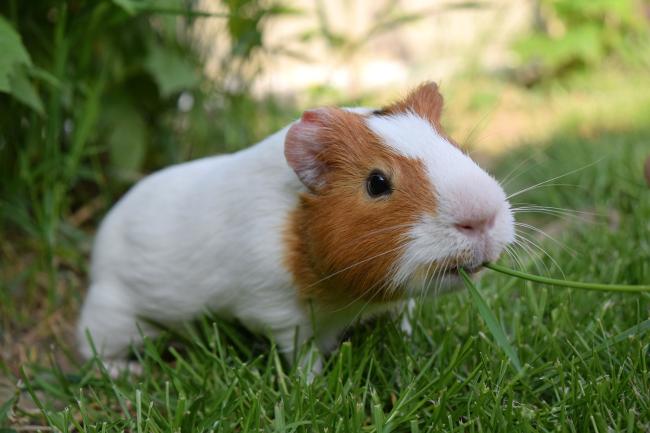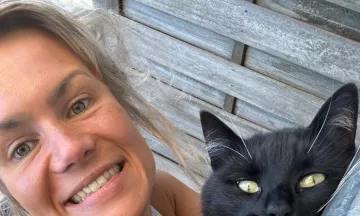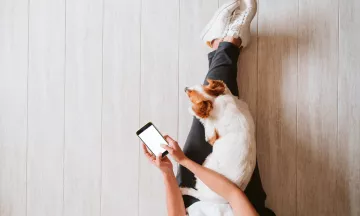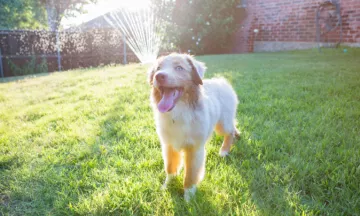Most pet owners are not only dedicated animal lovers; they’re also passionate about nature and the environment. However, pet ownership and sustainability aren’t always 100% compatible. Yep, even your beloved pet leaves an ecological pawprint! Nevertheless, you can still take some positive steps and… every little bit helps! Discover how to make life with your faithful companion fun, green and eco-friendly with our 7 tips for sustainable pet ownership.
1. Buy in bulk
Pet owners require a constant supply of food, cat litter, bedding, hay or straw. Buying in bulk saves on packaging materials and transport. As it tends to be cheaper per kilo, it also saves you a considerable amount of money. And it lasts longer too, significantly reducing your shopping trips.
2. Cat litter
Each cat goes through an average of 45 kg of cat litter per year. The less litter you use, the better it is for the environment. Scooping out poo and pee clumps on a daily basis enables you to go longer between refills. We recommend choosing a biodegradable cat litter that’s made from renewable raw materials, such as wood, corn, beet pulp, paper or compost. And use an eco-friendly cleaning product when cleaning your litter tray (or rabbit/guinea pig hutch or birdcage): it’s good for the environment and the health of your pet!
3. Rescue pet
It’s tempting to plump for a specially bred pedigree cat or dog. Yet, opting for a rescue pet is an extremely sustainable option. You can do this via an animal shelter, rescue foundation or private owners who wish to give their pet up for adoption. It’s no secret that there are countless cats and dogs patiently awaiting their forever homes. But did you know you that you can also adopt rabbits, rodents and other small pets? The RSPCA or in the Netherlands de Dierenbescherming are great places to start your search.
4. Sustainable food
Food places a heavy burden on the environment. You can make a huge difference by selecting a sustainable and animal-friendly product. Be critical of marketing texts that include words such as 'natural', which may sound appealing but can be misleading. Make sure that what you buy is truly 'organic' and boasts the requisite certification, such as the EKO or RSPCA Assured label.
5. Vegetarian or vegan?
An increasing number of vegan pet owners are choosing to feed their pets a plant-based diet. This might be great for the environment, but what about your pet? Cats and dogs require animal proteins to stay healthy. Many vegetarian and vegan products now contain vegetable proteins that are suitable for cats and dogs. However, not all pets are as keen or environmentally aware as their owners! A vegan diet is technically possible, providing you carefully monitor your pet: keep a close eye on his energy levels, poop, coat and general health and well-being. If you’re in any doubt, switch to (sustainable) meat products instead.
Another option for confirmed vegans is to choose for naturally vegetarian pets, such as rabbits or guinea pigs!

6. Protect nature
Our pets might be adorable, but many are natural predators. Whilst it’s important to satisfy their hunting instincts, you needn’t allow your cat or dog to hunt wild animals or breeding birds. Always make sure that your dog is leashed in forests and parks where they’re not permitted to run free. If you do wish to indulge your four-legged friend in the thrill of the 'chase' then make your walks extra challenging with a variety of search and retrieve games. (And clean up his poop using biodegradable bags :-))
Cats can also do a lot of damage to nature. Bird populations, in particular, are under threat from hunting cats. If you want to prevent your little furball from getting her claws into something that she shouldn’t, then keep her inside and ensure that she benefits from plenty of indoor play and stimulation!
7. Sustainable pet toys
Pet stores are awash with sustainable cat and dog toy brands. Of course, it’s even more environmentally friendly to make your own. It needn’t be difficult either. Your guinea pig, rabbit or cat is often just as happy with an empty toilet roll or cardboard box to play with/sleep in than specially made plastic housing for example. And you can rustle up the finest eco-friendly cat toys using only recycled scraps of material and a dash of cat nip in next to no time.
Got some sustainable tips of your own? Then share them in the comment section below!




